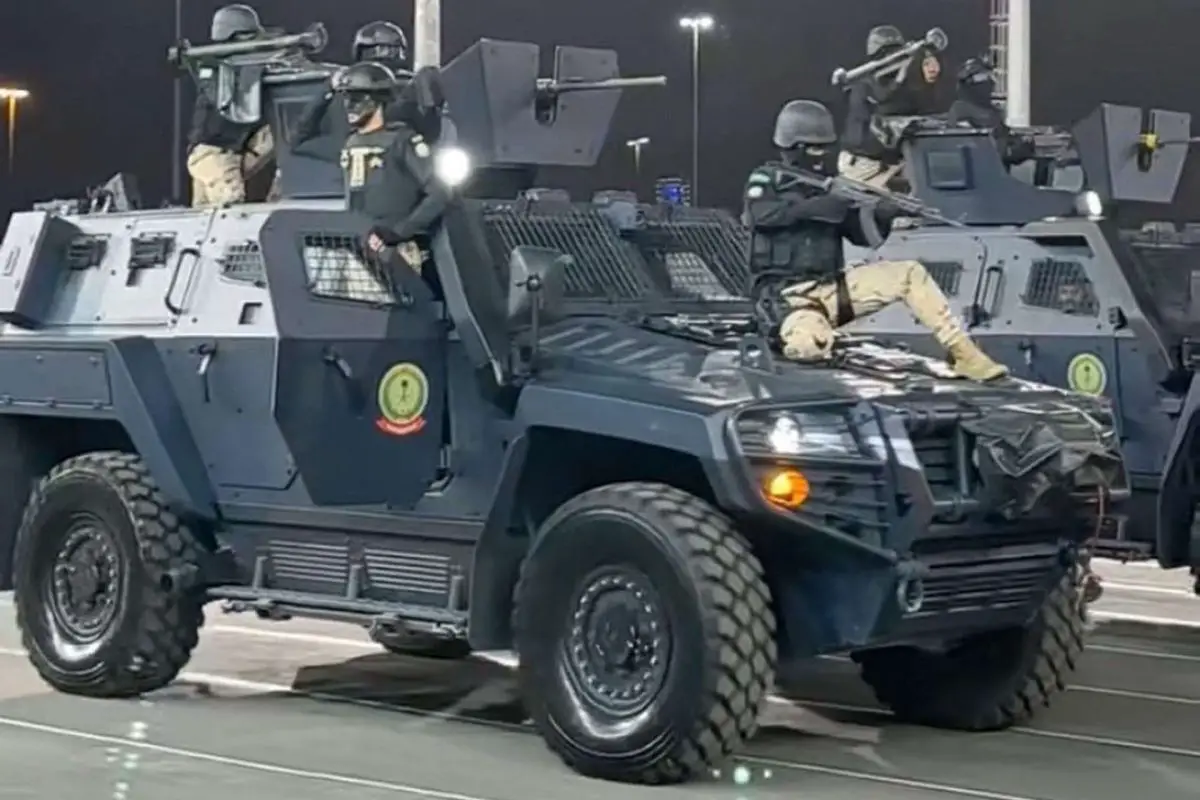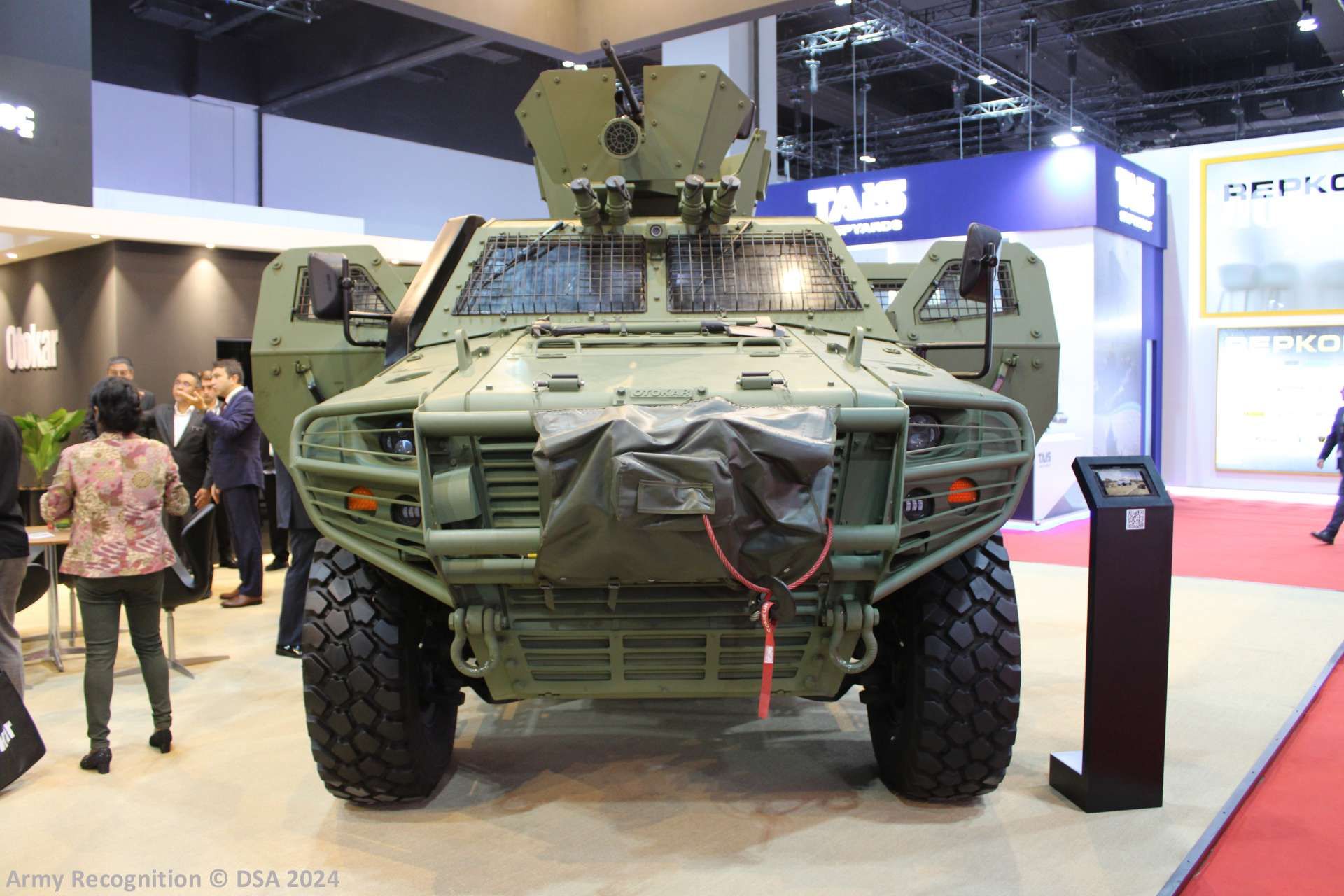Breaking News
Saudi Special Forces buy Turkish Otokar Cobra II armored vehicles to strengthen Mecca security.
On June 10, 2024, Saudi Arabia held a military parade in Mecca (officially Makkah al-Mukarramah, commonly shortened to Makkah) to highlight the readiness of its Special Forces for the security of Hajj and Umrah. During this event, Saudi Arabia revealed the purchase of an unspecified number of Turkish-made Cobra II armored personnel carriers (APCs) from the company Otokar.
Follow Army Recognition on Google News at this link

During a military parade in Mecca, Saudi Arabia revealed the purchase of an unspecified number of Turkish-made Cobra II armored personnel carriers (APCs) from the company Otokar. (Picture source: Twitter/ConflictTR)
In 2024, Saudi Arabia increased security measures for the Hajj pilgrimage, which draws around two million pilgrims annually. These measures include advanced surveillance and security systems, such as security aviation and vehicles, along with the participation of female security personnel. Mandatory registration through the Nusk platform and vaccination verification via the Sehaty app are required for all pilgrims to ensure health and safety compliance. Security forces have conducted extensive drills to prepare for various scenarios, emphasizing readiness to handle any disruptions or emergencies.
Health protocols are strictly enforced, requiring vaccinations for COVID-19, influenza, and meningitis. Both international and local pilgrims must comply with these health regulations, using government-approved travel agents to ensure proper arrangements. These measures aim to mitigate the spread of infectious diseases and manage the large influx of international attendees. Security preparations also include the deployment of explosives disposal experts at key entry points to prevent potential threats.
Crowd management is a critical concern during Hajj, which saw over 1.8 million pilgrims last year. Authorities have refined their security strategies based on past experiences and incidents, such as the 2015 stampede in the Jamarat area, which resulted in over 2,400 deaths, and the 1990 tunnel tragedy, where 1,426 pilgrims died due to suffocation and trampling. These incidents have led to ongoing efforts to improve crowd control, emergency response, and overall safety measures to prevent similar occurrences in the future and to improve defense response times and effectiveness.

The Cobra II's modular design allows for the integration of various weapon systems, including remotely controlled weapon stations with 25mm machine guns and grenade launchers. It can also be equipped with low-altitude air defense missile systems. (Picture source: Army Recognition)
The Otokar Cobra II is a 4x4 tactical wheeled armored vehicle designed and produced by the Turkish company Otokar. It builds on the success of its predecessor, the Cobra, by offering enhanced protection, mobility, and payload capacity. The Cobra II features a monocoque hull structure, providing ballistic and mine protection. It can carry up to nine personnel, including the driver and commander, and has a gross vehicle weight of 12 tons. The vehicle is powered by an engine that enables a maximum speed of 110 km/h and a range of 700 km, suitable for various military operations, including urban and off-road missions.
The Cobra II's modular design allows for the integration of various weapon systems, including remotely controlled weapon stations with 25mm machine guns and grenade launchers. It can also be equipped with low-altitude air defense missile systems. The vehicle's protection features include armor that can withstand 7.62mm rounds and artillery shell splinters, as well as a V-shaped hull that deflects blasts from improvised explosive devices (IEDs) and mines. Additionally, the Cobra II offers optional equipment such as a nuclear, biological, and chemical (NBC) filtration system, an automated fire extinguishing system, and navigation aids.
The Otokar Cobra II can be configured in multiple configurations to meet various operational requirements. These configurations include an anti-aircraft missile launching platform, anti-tank vehicle, command and control vehicle, field ambulance/medical evacuation vehicle, internal security vehicle, jammer platform, Mine Resistant Ambush Protected Vehicle (MRAP), mobile Satcom, mortar fire detection radar vehicle, personnel carrier with dual Remote Controlled Weapon Stations (RCWS), personnel carrier with an open cupola, reconnaissance and surveillance vehicle, and a recovery vehicle.
Countries operating the Cobra II include Azerbaijan, Bangladesh, Ecuador, Ghana, Ivory Coast, Kazakhstan, Morocco, Rwanda, Saudi Arabia, Senegal, Tunisia, Turkey, and Ukraine. This broad adoption indicates the vehicle's applicability in various military contexts, making it a strategic asset for Saudi Arabia’s security forces as they work to secure the Hajj pilgrimage.

The Otokar Cobra II can be configured in multiple configurations, including an anti-tank vehicle, command and control vehicle, field ambulance/medical evacuation vehicle, internal security vehicle, jammer platform, reconnaissance and surveillance vehicle, or a recovery vehicle. (Picture source: Army Recognition)


























